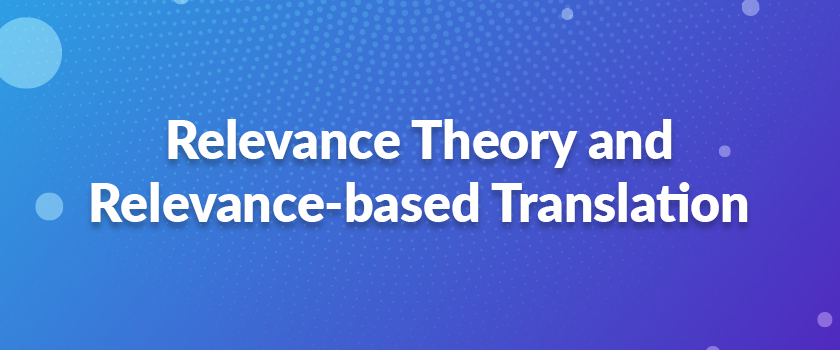In this entry, I would like to talk about relevance theory by exploring some of its major concepts and their contribution to translation studies.
1. An Introduction to Relevance Theory
In 1986, French linguist and philosopher Dan Sperber and British linguist Deirdre Wilson co-published a book entitled Relevance: Communication and Cognition. In this book, Sperber and Wilson put forward the relevance theory which is mainly concerned with communication and cognition and has exerted a far-reaching influence on the western pragmatic field.
Relevance theory, a branch of pragmatics, is about communication from the cognitive point. Since then, many scholars home and abroad have done further researches on this theory.
Under this theory some other sub-theory are included, for example, major concepts of relevance theory , ostensive-inferential communication. Relevance theory is a useful means to study communication.
The more the resemblance between the speaker’s intention and the hearer’s understanding is, the more effective the communication between them will be. There are also some facts which are embedded in this theory, such as contextual effects, cognitive environment, descriptive and interpretive use, optimal relevance.
2. Relevance-based Translation Studies
From the basic concepts of relevance theory explained above, we should explore the possible applications of relevance theory on translation. Relevance theory focuses on human communication and cognition. Although it is not initially designed for translation, it can be applied to translation studies.
Many scholars around the world have attempted to establish the relationship between relevance theory and translation. Irena Kovack, a Slovenia scholar, explored in his paper Relevance as a factor in subtitiles reduction how to apply relevance to translation studies. (Kovacic,2000) Other scholars also show great interest in the relevance theory.
Schleiermacher claims that the same utterance, in different context, can generate different interpretations. “The translator can either leave the writer in peace as much as possible and bring the reader to him, or he can leave the reader in peace as much as possible and bring the writer to him.” (Schleiermacher,1838, as translated in Wilss, 1982)
Read Also: Is Translation Easy?
3. Summary
In this post, I analyzed some major concepts of relevance theory, such as contextual effect, cognitive environment and optimal relevance. Sperber and Wilson see human communication as an ostensive-inferential process. It is a process of inferring the intended meanings, which heavily depends on context.
The concepts reviewed in this part, if applied to translation, “the most complex thing in the history of cosmos” (Zhao Yanchun, 1993), have a great explanatory power. In the following entries, I will proceed to demonstrate how news translation can be explained by relevance theory and the relationships between them in detail.



